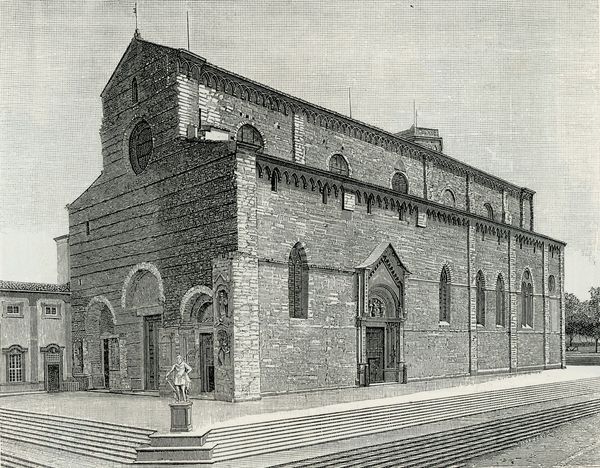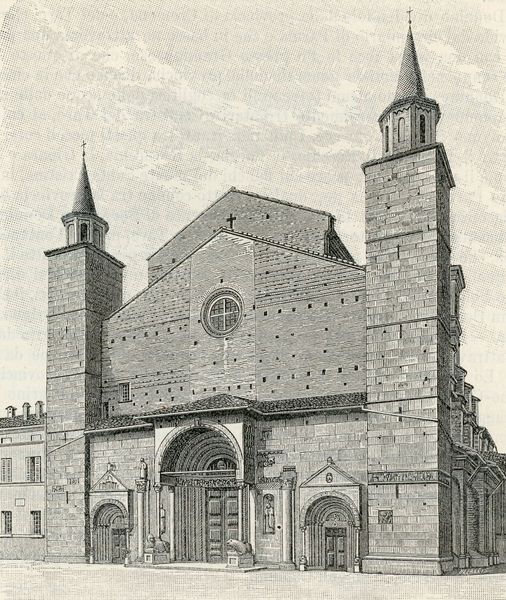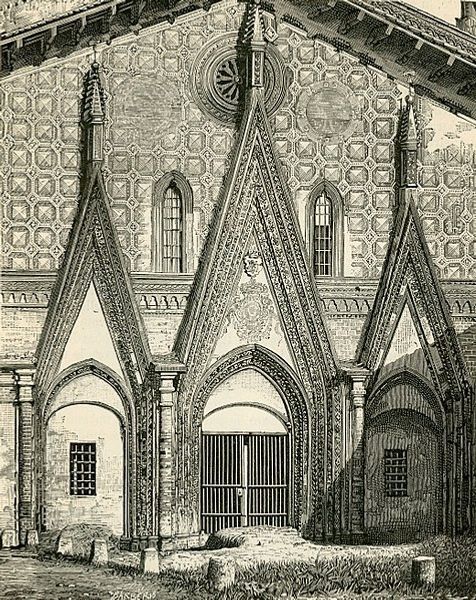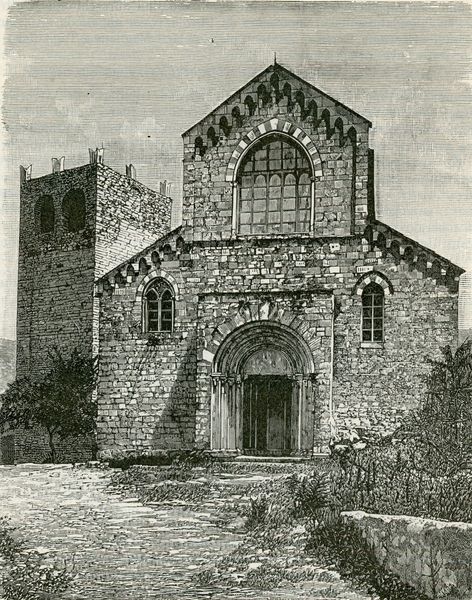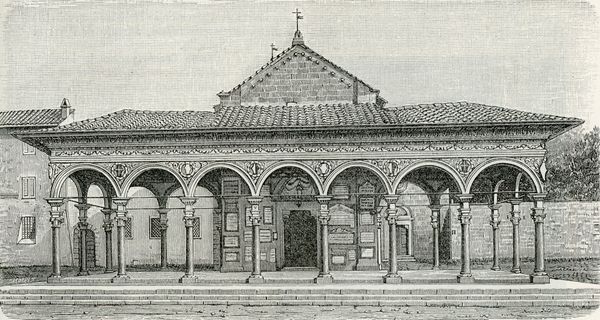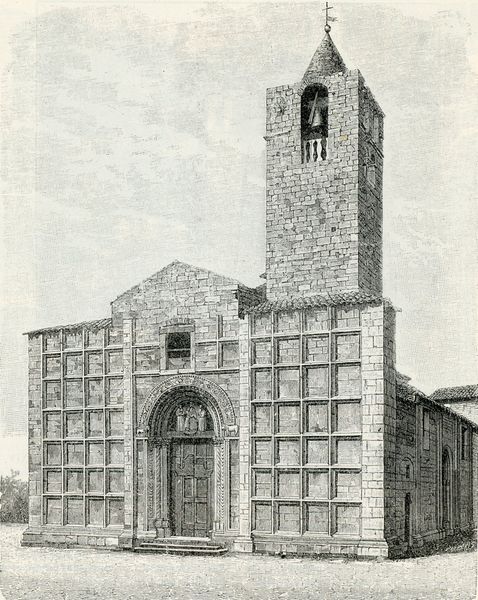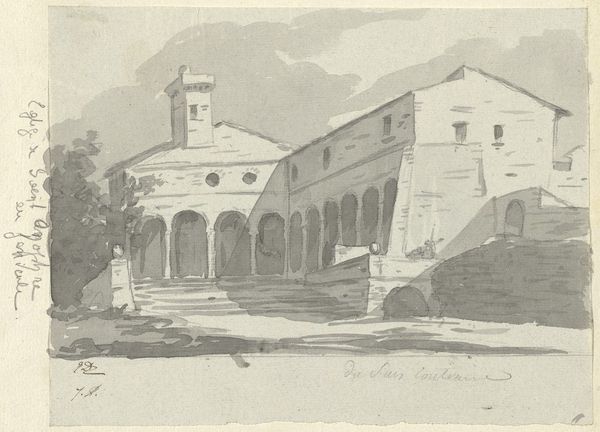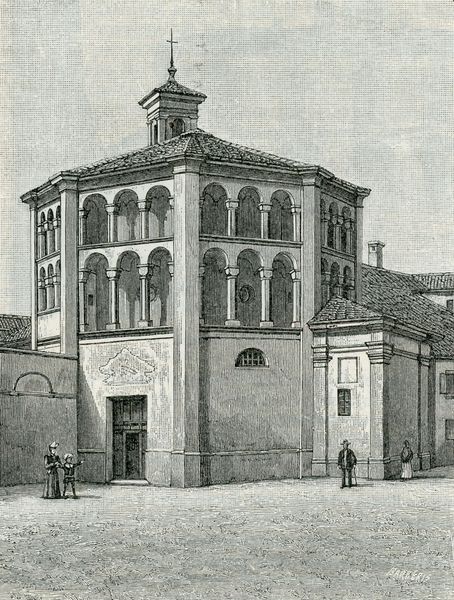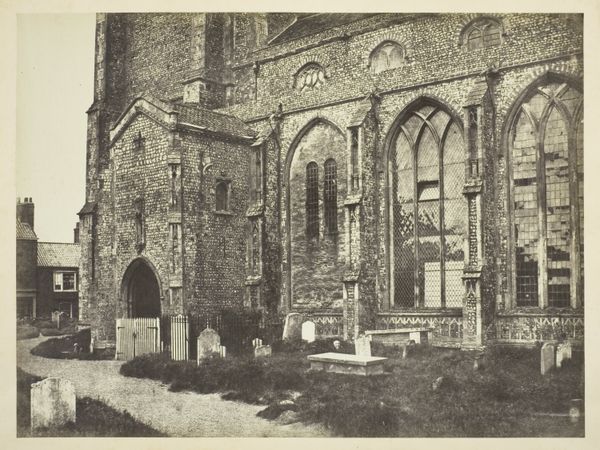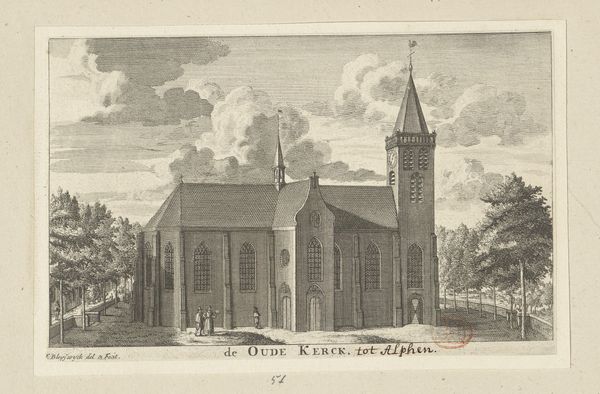
drawing, print, paper, ink, engraving, architecture
#
architectural sketch
#
drawing
# print
#
pencil sketch
#
paper
#
form
#
romanesque
#
ink
#
geometric
#
architectural drawing
#
line
#
architecture drawing
#
cityscape
#
engraving
#
architecture
#
realism
Copyright: Public domain
Curator: This is Giuseppe Barberis's "Cattedrale Di San Ciriaco," created in 1898. It's rendered as a print, using ink, engraving, and pencil on paper. A beautiful piece focusing on architecture! Editor: My immediate reaction is one of awe at its imposing geometric structure—almost cold in its meticulous detail, yet captivating in the interplay of shadow and light. Curator: That perceived coldness might stem from the cultural weight a cathedral carries—especially one drawn with such precise realism. Think about what the Church represented in 1898, a fixed and seemingly immutable order. Editor: Precisely. The linear perspective amplifies that sense of hierarchical space, drawing the eye towards the apse, but I'm intrigued by the visual texture – all that stone, rendered so meticulously with line. Semiotically, stone equates to permanence, solidity… Curator: And the geometric form? A direct reach toward divinity, following centuries-old architectural symbology. Every arch, column, and carefully placed window whispers of that enduring aspiration. Editor: It is, undeniably, about reaching. But look closer at those lines, etching depth but also division in that structure – it appears less solid the longer I observe. Could those linear articulations imply instability, questioning what appears monolithic? Curator: I hadn’t considered such a reading… but looking at the clouds above, heavy with suggestion, that slight darkness might represent the social anxieties prevalent near the century’s end, a subconscious questioning even amidst devotion. The style references Romanesque form. Editor: Ah yes, Barberis cleverly engages Romanesque elements. I keep returning to how the scale lends importance while the lines create further depth – are we meant to feel small against such enduring history? Curator: Quite likely! By placing us at the bottom of a grand staircase, looking up towards those immense doors, the image instills humility. A perfect distillation of faith and time. Editor: This analysis unlocks such depths. Thank you for enriching my visual understanding and inviting a deeper exploration of the artwork. Curator: The pleasure was mine. A good reminder that even a seemingly straightforward architectural sketch contains volumes when you begin to examine its cultural and symbolic weight.
Comments
No comments
Be the first to comment and join the conversation on the ultimate creative platform.
